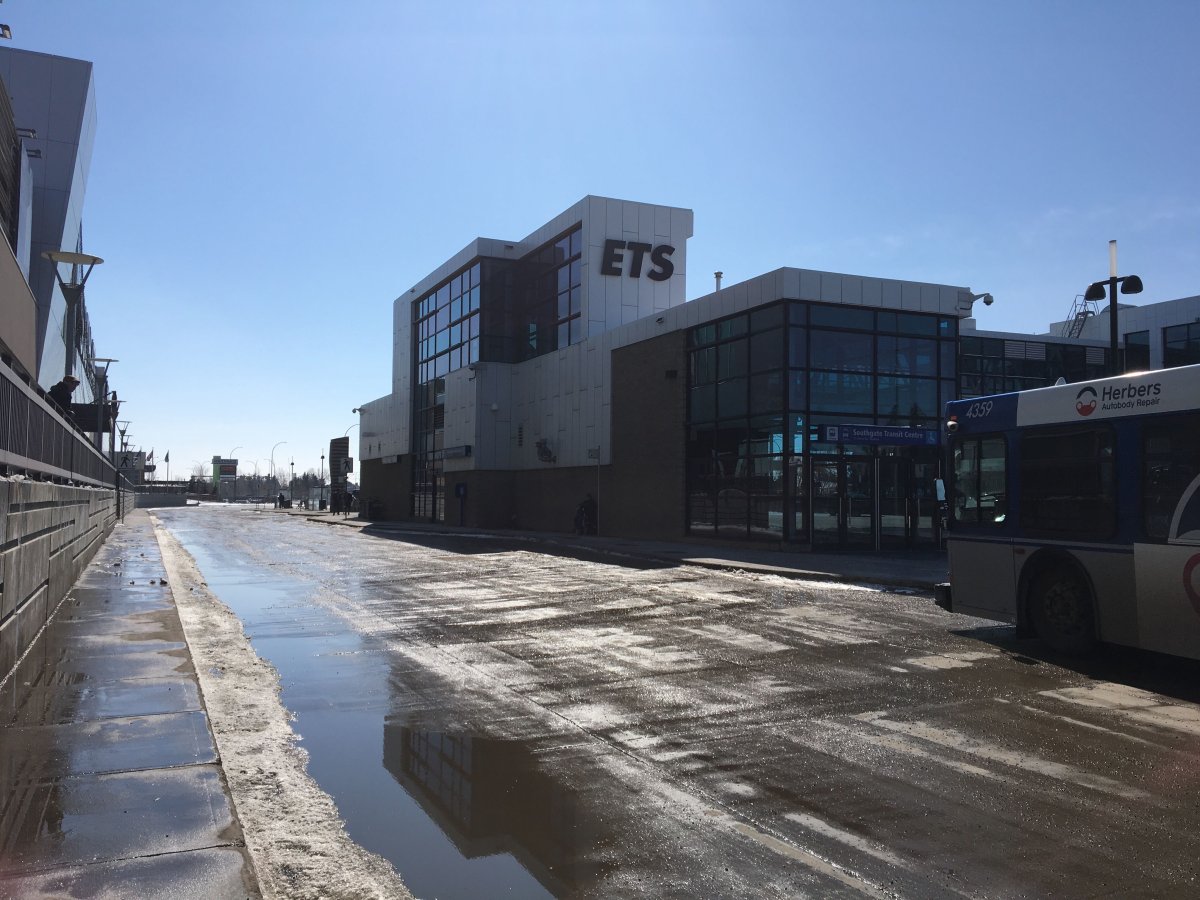The union that represents Edmonton’s transit workers is calling for more measures to protect drivers against COVID-19.

“The local is also calling for employers to provide more personal protective equipment, more PPE, especially in the form of masks. For DATS operators, the plastic sleeves that they need to protect themselves.”
Bradshaw said Tuesday that while the union understands that the masks mainly protect others from the wearer, it believes it would increase safety on buses.
“It’s very clear to me that frustrations, concerns, fears are high right now,” Bradshaw said.
“Everybody is at risk and everybody is concerned. No one wants to catch this disease.”
The city said it has worked with Alberta Health Services and implemented several measures to increase safety on buses, including putting up signage to prevent riders from sitting too close to one another and requiring passengers to board through the rear door of the bus.
The city no longer requires payment to ride, has reduced service levels and increased cleanings of its vehicles. Additionally, the city has installed protective shields on every in-service conventional bus.
“Operators, at their own discretion, can choose to wear gloves and a mask (or face covering) if they feel it enhances their safety. We have also provided our operators with hand sanitizer so they can regularly disinfect their hands.”
However, several incidents over the past few weeks are raising alarms with the union. On April 5, a rider repeatedly coughed on a city transit driver and said they had tested positive for COVID-19. That person was later charged by police.
- Invasive strep: ‘Don’t wait’ to seek care, N.S. woman warns on long road to recovery
- Canadian man dies during Texas Ironman event. His widow wants answers as to why
- ‘Super lice’ are becoming more resistant to chemical shampoos. What to use instead
- Solar eclipse eye damage: More than 160 cases reported in Ontario, Quebec

Bradshaw said another incident happened this past weekend that was reported to the union.
“It was an incident, mainly a shouting incident. There was no contact but it put the operators, two of them, in close proximity with the perpetrators,” Bradshaw said.
In a post on the union website from April 8, it said that drivers are being permitted to wear their own masks. Bradshaw added that he understands supplies for some items are low.
“The city is in touch with us. They’re very responsive to us,” Bradshaw said. “Their hands are tied in some cases by the lack of supply of PPE.
According to the city, the demand for DATS has decreased by approximately 85 per cent through the pandemic.
“This has allowed us to thoroughly disinfect our vehicles after they come out of service,” Anderson said. “Although DATS buses do not have operator shields, physical distancing is maintained by providing single-passenger trips only.”
He added that “in terms of supplying DATS operators with disposable plastic sleeves, we’re continuing to follow the advice of public health officials at AHS.”

The city has also redeployed more than 30 workers to clean and sanitize buses each night, according to the union. Transit peace officers are also being stationed at Century Park and select bus routes to escort passengers who have no destination off trains and buses.
“ETS has done a good job,” Bradshaw said. “Can we do better? Absolutely, we can.”




Comments